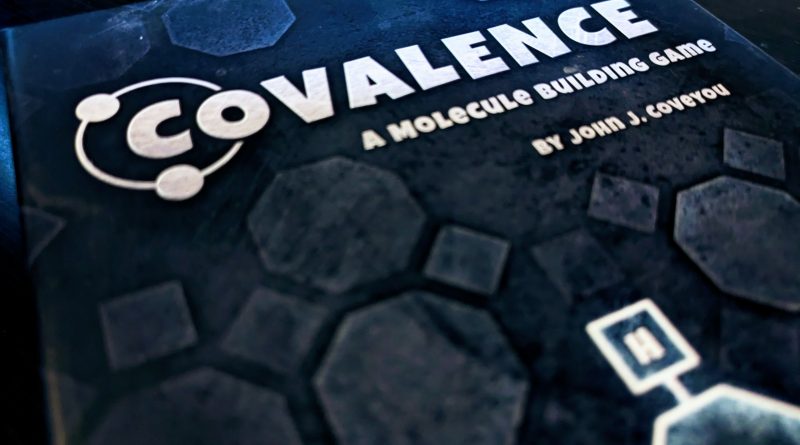Covalence
Any time I can answer the question “Why are you playing that game?” with “FOR SCIENCE!”, I know I’m doing something right. Granted, that isn’t a question I’m often asked, but I’m waiting for it, and thanks to Genius Games, I’ll be ready when it comes. If you haven’t heard of them, Genius Games makes tabletop games that are based on – you guessed it – SCIENCE! They’ve got a pretty decent lineup of games on topics ranging from cell biology to the structure of viruses. Today, we’ll be looking at Covalence, a co-operative clue giving game in which “Builders” must deduce the structure of unknown molecules based on cards they are given by the “Knower”, then build them.
Let’s get this out of the way. Covalence is based on actual science. Players will be combining elements in scientifically accurate ways to build scientifically accurate molecules. HOWEVER, before I lose the interest of readers who may not be savvy in the Science department, scientific knowledge is not necessary to enjoy the game.
Covalence comes with two different decks of clue cards, a deck of secret molecule cards, some wooden tokens, and cardboard element tiles. Overall the component quality is very good – great quality wooden tokens, nice thick card stock and sturdy cardboard for the tiles as well as the game box. The art by Tomasz Bogusz is great, somehow managing to mix science and mystery into an art style that makes sense and fits the theme of the game. I haven’t noticed any printing issues – colors are all consistent, and printing on both tiles and cards are aligned well.

Setup was pretty straight forward, and was described clearly in the rulebook. In Covalence, one player is the “Knower”, and the rest of the players are “Builders”. All Builders receive a set element tiles – three Carbon, two Nitrogen, two Oxygen, and seven Hydrogen. A number of guess and clue tokens are set aside depending on player count and the desired difficulty level. The Secret Molecule, Number Clue, and Organic Clue cards are separated into their own respective decks and shuffled. The top four cards of both clue decks are revealed, and the each builder receives three Secret Molecule cards, face down (since the Knower is the only one allowed to look at the Secret Molecule cards, we ended up straying from the rules a little bit here and left the Secret Molecule stacks in front of the Knower instead of the Builders), and that’s it. The game is ready to play.
At the start of the game, the Knower is allowed to give each builder one clue, which consists of one organic clue card and any number of number clue cards for free. It is important to note that the Knower can not give any other assistance aside from clue cards, which makes even the orientation of the cards when they are presented to the Builders significant. Any subsequent clues require the Builders to collectively decide to spend a Clue Token. Based solely off of the cards they receive from the Knower, the Builders have to assemble their element tiles into a molecule that matches their Secret Molecule card.

While the game is cooperative, each Builder is trying to build their own unique Molecule. It is extremely unlikely that a Builder will be able to guess their Secret Molecule based on one clue, so the Builders will eventually come to the consensus that another Clue Token should be spent. When a Clue Token is spent, the Knower must decide ONE builder to give an additional clue. Once all of the Builders are confident that they have their Secret Molecule constructed correctly, they will spend a Guess token as a group. The Knower will then announce if each player has the correct molecule structure. Every correct guess refunds the group one Clue Token, and the player receives a new free clue for their new Secret Molecule. If all players successfully assemble all of their Secret Molecule cards, the group wins. If the Builders run out of Guess Tokens before this happens, the game ends and the group loses.

Our review copy also included the Chemist expansion, which adds new Secret Molecule cards along with Chlorine elements, which drastically increases the possible combinations, and therefore the difficulty. We recommend starting off with the base game and moving up through the difficulty settings as your group gets more comfortable with the game. The easiest difficulty was plenty difficult enough to get our group oriented. After spending some time with the same group, increasing the difficulty starts to become all but required, and it was nice to have the option to include the Chemist expansion after the base game’s difficulty settings were exhausted.
We had a great time with Covalence. Our group plays Mysterium on occasion, and Covalence has some similar mechanics – we felt right at home. I confess I’m not particularly drawn to the theme, but I can’t dispute that it comes through well. The gameplay is solid enough to keep our group engaged, even for those of us who aren’t Science nerds. Geeks? Nerds. Definitely nerds.

I played most games as the Knower, and can confirm that selecting the best clues to avoid wasting Guess Tokens was just as challenging as deciphering clues as a Builder. The game plays relatively well at all player counts, but flows significantly better at two, largely due to the fact that Clue Tokens only allow the Knower to give one clue anyways. This resulted in a good amount of down time for Builders that didn’t receive a clue. Of course, this can be mitigated if Builders work together to discuss clues, but mileage varies depending on the group and how willing they are to work together.
Covalence has a fun table presence, great component quality, great replayability, and sufficient difficulty settings for pretty much any gaming group (I still say start on easy, just trust me). The rules were clear and concise, and we got up and running in just a few minutes. Any questions we had while playing were covered in the rulebook as well, making our first plays run smoothly. If you have a co-op or deduction group, Covalence is a great choice to shake up your game night with a unique theme.
Review copy provided by Genius Games
Publisher: Genius Games
Number of Players: 2-4
Age: 8+
If you are interested in making a purchase based on this review, please consider using our affiliate link. If you do, we will receive a small commission.
Repost of our original 2019 review. See our About Page for details.

